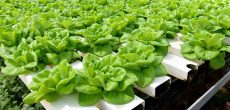Convergence in science is the powerful fusion of distinct disciplines—where biology, engineering, computer science, and design merge to solve multifaceted challenges. This synergy transcends traditional boundaries, enabling innovations that no single field could achieve alone, and reshaping how humanity approaches complex problems.
How Merging Fields Reshapes Problem-Solving and Decision-Making
When disciplines converge, problem-solving evolves from isolated approaches to integrated frameworks. For example, in healthcare, AI algorithms trained on biological data now assist diagnostics by identifying patterns invisible to human observers. This interdisciplinary bridge accelerates accuracy and speed, transforming clinical decision-making.
Case Study: AI Integration in Healthcare Diagnostics
A prime illustration is the convergence of AI with medical diagnostics. Machine learning models trained on vast datasets of medical imaging and genomic data now support radiologists in detecting early-stage tumors with higher precision. This integration doesn’t replace clinicians but enhances their judgment through data-driven insights, reducing diagnostic errors and improving patient outcomes.
- AI algorithms analyze radiology scans faster than human experts.
- Cross-referencing genetic profiles allows personalized risk assessments.
- Collaboration between data scientists and clinicians ensures clinical relevance.
From Holistic Thinking in Education to Everyday Innovation
The cognitive shift toward convergence begins in education, where holistic thinking is increasingly emphasized. Students learn not just isolated facts but how science, technology, ethics, and design interrelate—preparing them to navigate a world where solutions demand integrated knowledge. This educational transformation fuels a generation capable of seeing connections others miss.
The Psychological Shift Toward Holistic Thinking
Modern pedagogy fosters mental models that cross traditional silos. Project-based learning, for instance, integrates STEM with social awareness, prompting students to design sustainable technologies that consider environmental, economic, and human factors. Such approaches cultivate adaptive thinking—key in today’s rapidly evolving landscape.
In consumer technology, this mindset manifests in innovations like smart home systems. These devices combine IoT connectivity, behavioral psychology insights, and energy science to create seamless, intuitive experiences that adapt to user habits—moving beyond simple automation to meaningful interaction.
Ethical Dimensions of Convergent Innovations
As disciplines converge in digital platforms, ethical tensions emerge around privacy, autonomy, and equity. Algorithms trained on personal data raise concerns about surveillance and consent. Moreover, unequal access to advanced tools risks deepening social divides. These challenges demand proactive governance and inclusive innovation frameworks.
- Transparency in data use builds user trust.
- Equitable design ensures benefits reach diverse populations.
- Regulatory agility keeps pace with technological evolution.
Future Pathways: Convergence Beyond Current Frontiers
Looking ahead, convergence promises breakthroughs at frontiers like synthetic biology and nanotechnology. Open collaboration models—such as cross-industry consortia—are accelerating discovery by breaking down institutional silos. These efforts lay the foundation for sustainable, human-centered solutions addressing global challenges like climate resilience and healthcare access.
Role of Open Collaboration in Accelerating Convergence
By fostering interdisciplinary teams and shared platforms, open collaboration enables faster translation of research into real-world impact. For example, global initiatives in synthetic biology now unite biologists, engineers, and ethicists to design safe, effective biomanufacturing processes.
Building Sustainable Solutions Through Interconnected Systems
Today’s integrative innovations form the bedrock of tomorrow’s sustainability. From smart cities that optimize energy use via AI to biocompatible medical implants developed through material science and clinical insight—convergence turns isolated advances into systemic progress.
Returning to Convergence’s Roots: Everyday Innovation as a Catalyst
At its core, convergence is not confined to labs or conferences—it lives in the everyday. It’s the wearable device that uses neural feedback to improve mental wellness, the home system that learns your routines to save energy, and apps that blend behavioral science with interface design to promote healthy habits.
Recognizing convergence as a natural, evolving force empowers individuals and organizations to embrace interconnectedness as a strength. From cognitive shifts in education to ethical guardrails and future breakthroughs, convergence shapes how we solve problems, experience technology, and build a sustainable world.
“Convergence transforms isolated breakthroughs into integrated solutions that enhance daily life—where science speaks in a language everyone can understand.”
| Section | |
|---|---|
| Understanding Convergence in Science | Merging disciplines creates unified approaches to complex challenges, accelerating discovery. |
| Impact on Problem-Solving | Interdisciplinary collaboration enables holistic, data-driven solutions beyond traditional limits. |
| Education’s Role | Holistic thinking prepares learners to navigate interconnected global issues. |
| Ethics and Governance | Privacy, autonomy, and equity must guide convergent technologies for inclusive benefit. |
| Future Pathways | Open models and cross-field innovation will drive sustainable solutions. |
| Everyday Convergence | Smart devices, adaptive systems, and integrated platforms reshape daily routines. |














 Visit Today : 213
Visit Today : 213 Visit Yesterday : 255
Visit Yesterday : 255 This Month : 3990
This Month : 3990 This Year : 22249
This Year : 22249 Total Visit : 37689
Total Visit : 37689 Hits Today : 514
Hits Today : 514 Total Hits : 179518
Total Hits : 179518 Who's Online : 2
Who's Online : 2




